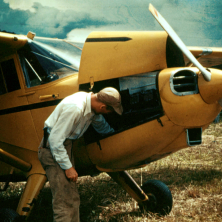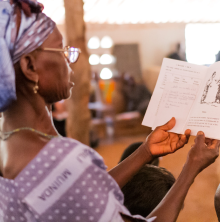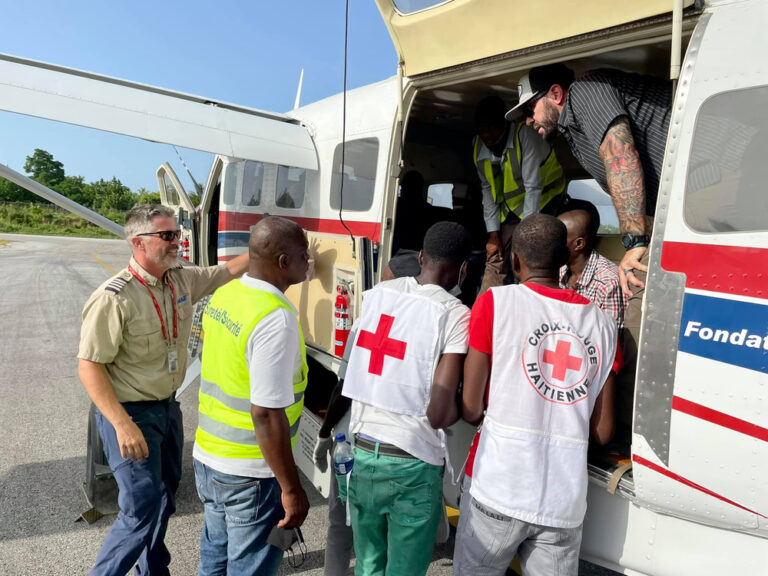Pilot logbooks reflect decades of faithful ministry
by Natalie Holsten
Since 1945, MAF has existed to bring the life-changing hope of the gospel to people in hard-to-reach places.
A brief look through the logbooks of three MAF pilots reveals their support of several generations of a missionary family in the mountains of Papua, Indonesia.
In and of itself, a pilot’s logbook is nothing remarkable. Just simple books used for recording dates, flight times, and destinations.
What is remarkable, however, are the stories behind the flight stats and how they testify to an MAF pilot’s years of faithful ministry.
1960s—Betty Greene and the early ministry to the Moni
On Dec. 22, 1960, MAF pilot Betty Greene recorded in her logbook—in tiny, neat script—that one of her flights that day was into Hitadipa, a remote Papuan village populated by the Moni people group. Her passenger was Johnny, age 8, returning from boarding school for the Christmas holidays.
“Johnny” was John Cutts, son of missionaries Bill and Grace Cutts, who began serving the Moni people in 1950. After a decade of difficult ministry, there was a small but growing group of baptized believers.
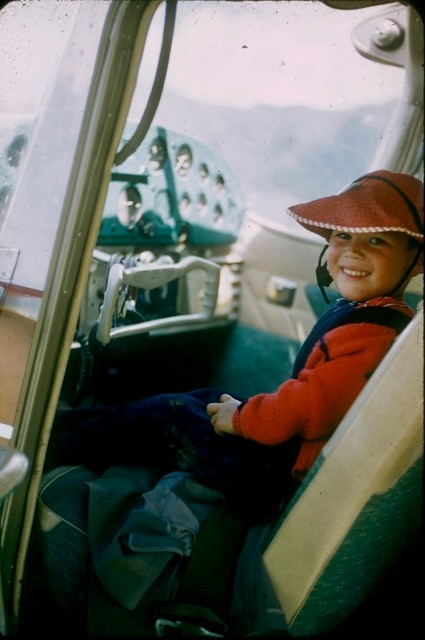
A few months before that December flight, Betty, along with missionary Leona St. John, hiked three days through rugged terrain from a neighboring village to check out the newly constructed Hitadipa airstrip, ensuring it was ready for an MAF plane to land.
On the trail, Betty witnessed tribal warfare and later wrote in her autobiography Flying High, “The people really were trapped in a darkness they couldn’t see. I realized again the importance of bringing the message of the gospel that gives hope and life to people who are lost.”
Betty knew the Hitadipa airstrip would be a tremendous help to the Cutts and their ministry. “Every time a new landing strip was opened, another valley was made more accessible to the gospel,” she wrote.

Her logbook recorded dozens of other flights into Moni territory, where Betty, as a female pilot, was an anomaly. John Cutts remembers the impact she made on the Papuans who met her.
“The Moni, like many Papuan tribes in the early days, had little respect for women, and felt their only value was tending gardens, pigs, and children, and caring for the men folk,” John shared. “Betty Greene shook up the tribe, men and women alike, because here was a woman flying a plane! She set a new, high bar for the girls and women who watched this phenomenon in action.”
John said Betty and the other MAF pilots were a lifeline for their family, supporting them with supply flights and medevacs as they did the hard work of translation, teaching, and providing basic medical care for the Moni.
1980s—Dave Rask serves the next generation of Cutts

For MAF pilot Dave Rask, one flight in the service of the Cutts family is forever etched in his memory.
“December 27, 1985,” Dave said, pointing to the entry in his logbook. “Karubaga to Mulia to Hitadipa to Mulia. I was pre-flighting the plane when the flight follower came on the radio and said John Cutts had an emergency and needed a medevac.”
John Cutts was now married to his wife, Joy, and serving as a second-generation missionary to the Moni. Together they were continuing the work started by his parents. The church was growing, schools were opening, and the Moni Bible translation was progressing.
But conflict had been brewing between violent separatists and the military. John got caught in the crossfire, and took a bullet to the shoulder, leaving a four-inch hole. Joy tended to him as best as she could, but he needed to get to a hospital ASAP.
“I left immediately, and on my way landed in Mulia to pick up Dr. Powell,” Dave recalls. “It was a good thing, because John had lost a lot of blood.”
The flight saved John’s life.
While the medevac was dramatic, Dave’s logbook also records many ordinary days of flying, supporting the work of missionaries like the Cutts. Looking back, Dave reflected, “You think of the people you served, and the impact MAF had is very clear.”

2000s—Brian Marx and current ministry to the Moni
Today, there are more than 150 Moni churches, all led by indigenous pastors. Much of MAF’s flying in recent years for the Moni has been in support of the church.
As a current MAF pilot in Papua, Brian Marx has flown a few hundred flights into the Moni village of Pogapa, carrying pastors, evangelists, and Bible translation teams. Occasionally he also gets to fly a load of school kids.
Brian recorded a memorable flight in his logbook on August 9, 2019. That was the day he flew seven Moni children to the city of Sentani, where they would begin as first-graders at Papua Hope School, a school started by an MAF missionary to raise up the next generation of Christian leaders.
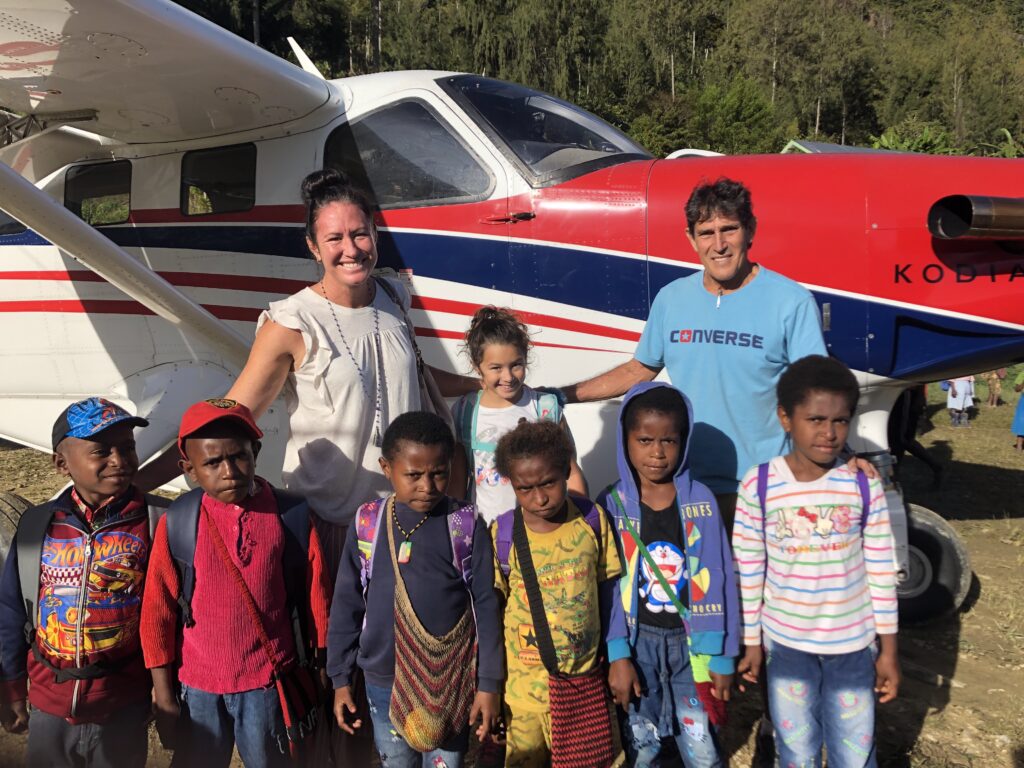
Also on the flight were John’s daughter, Jaime Cutts Shust, and her daughter, Alina. Jaime is the third generation of the Cutts family to serve the Moni. She works primarily with Village Heartbeat, the foundation started by John and Joy to help the Moni with education, healthcare, and leadership.
Drawing on her own experience as a child going away to school, Jaime helped the Moni students adjust to life in the city. Jamie says that while they’re getting a solid Christian education, “It’s important the kids return back to their villages for school breaks, to stay connected to their culture and family.”
To that end, MAF regularly flies the Moni students in and out of their home villages during school breaks. “Those flights are fun,” Brian said.
But recently, those flights, as well as the ones for church and translation work, have been severely limited.
The armed separatist movement—the same one that resulted in John getting shot in 1985—continues. In recent years the conflict has caused significant suffering for the Moni people and ongoing challenges for the Cutts’ ministry. Many Moni have fled the dangers they face in their villages—assault, theft, burning of churches and schools—for the relative safety of cities on the coast.
As seen in the logbooks of Betty, Dave, and Brian, many aspects of MAF’s work in Indonesia and around the MAF world are timeless, like weighing and loading cargo, maneuvering around bad weather, and delivering missionaries to remote conditions.
But the logbooks also reflect the growing complexities—like rebel conflict and political instability—that MAF and its ministry partners face as they serve in difficult places.
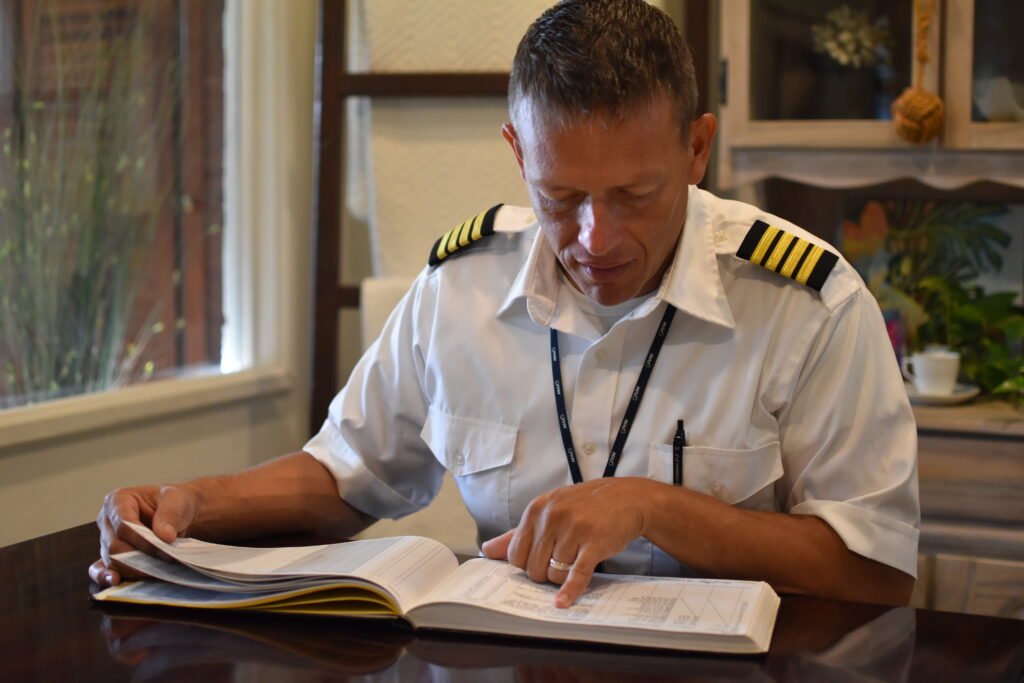
The heart of MAF is to continue serving Pogapa, as it’s a key location for the health of the Moni church. We ask that you join the legacy of prayer that has encircled MAF for 80 years and pray for peace to return to the Moni villages, and in all of the volatile places where MAF serves.
Story appeared in the May 2025 FlightWatch issue. Read the entire issue here:
